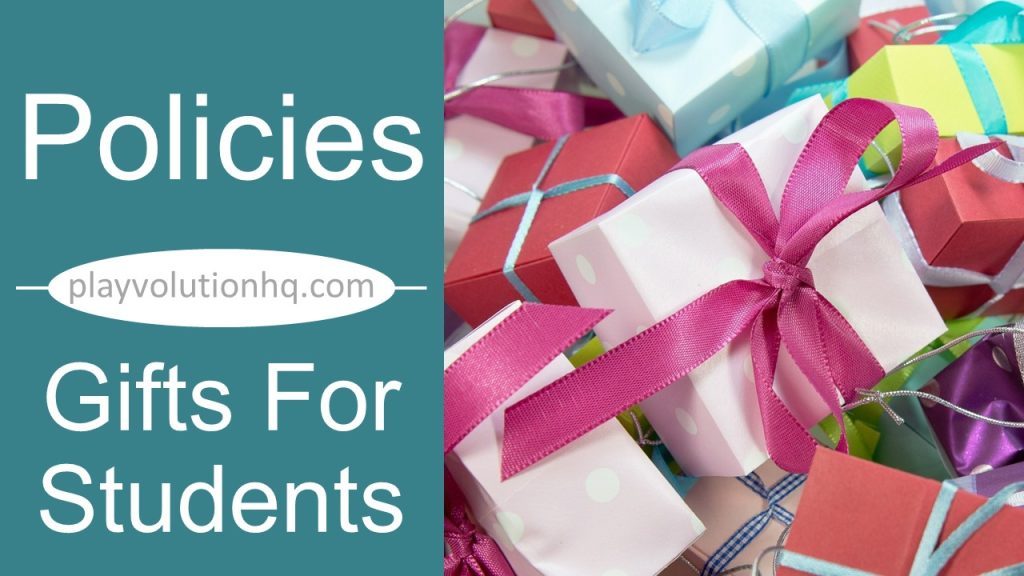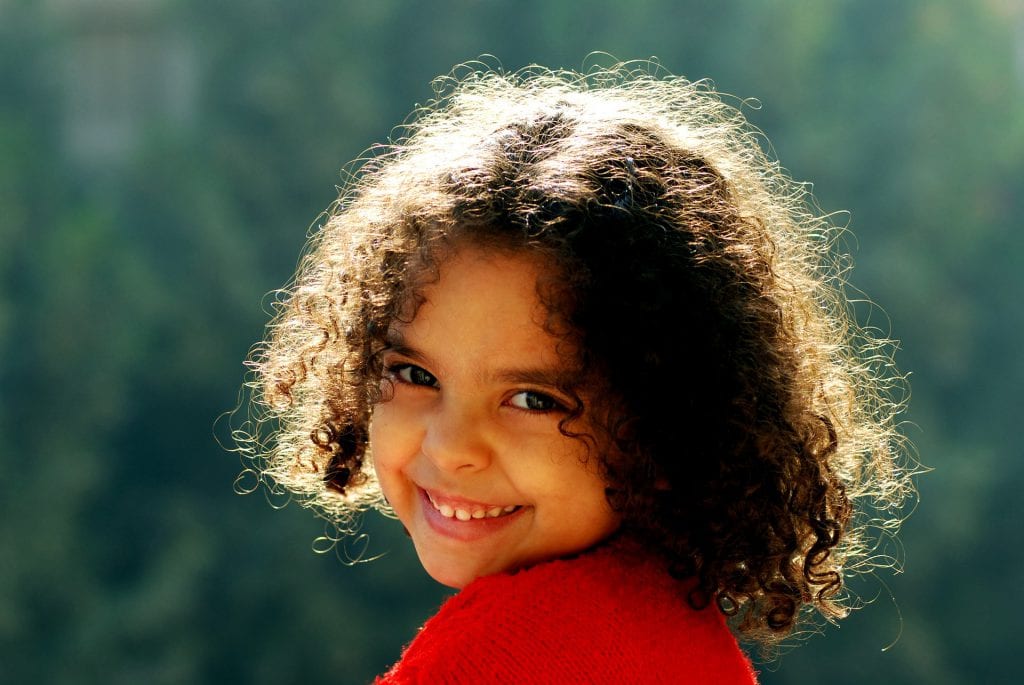
Gifts For Students Overview
Crafting policies about gifts for students is one way we, as educators, can look at what we value, why we value it, and how we put those values into practice. Humans are drawn to ritual, and the rituals of gift-giving are common in many cultures, especially the United States (and especially for children.) How do we blend these overarching cultures with the cultures of our classrooms?
This post is intended to spark reflection and suggest ways of addressing the topic covered when writing or updating policies and procedures. Your policies and procedures should be written to meet your program’s needs and unique circumstances.
Browse More Policy & Procedure Resources Here
There’s a lot to cover with gifts for children, so I’ve split this into two parts: presents that they get from other children, and presents that they get from teachers. I also have posts on gifts for teachers, as well as gifts for families from children.
Presents From Other Students
I once heard a teacher tell a child that they shouldn’t give a picture that they drew to their friend unless they were going to make one for everybody.
I think there are onion- levels of layers to dissect with that interaction, but the broader point that it leads me to is this: I see no issue with letting children experiment with the social politics of giving someone something that they made in class. Giving each other handmade objects (or sharing a toy, or offering to take turns) are fascinating interactions that can lead to further fascinating interactions: how do we show gratitude and grace when receiving a gift? How do we reject something in a compassionate way? What do we do when our intended effect of the gift doesn’t pan out?
I recognize that the waters get a bit muddied when gifts from outside the classroom come in to play, be it for birthdays, holidays, or just because. Gift giving is a legitimate way to express appreciation or friendship. I distinctly remember an instance in elementary school when I heard we were getting a new student from another country. I made her a piece of art at home to welcome her (and in hopes that she would want to be my friend, as my only other good friend was in a different class.
We didn’t end up close by any means, but it felt good.) At other times, I remember jealousy at watching other students bring in bracelets or trading cards for others, but not me; if a teacher said that they needed to bring enough to share, or they needed to ‘do this outside of school’, I always felt vindicated: Haha, cool kids! You can’t have stuff if I can’t have it, too!
I think the ‘save it for home’ reasoning is valid, but not because we always need to give everyone the same things; I think gifts for students can be a bit distracting at school, so a moratorium on bringing in birthday presents for friends prevents us from having the same conversation over and over. I recommend an honest approach when discussing this: “I know you’re excited to give this gift to your friend, and it might make other people wonder why they don’t get gifts in school on their birthdays. Let’s put it in a safe place, so you can give it to your friend after school is over – that will be a special moment for you both.”
Treats or goody bags are another weird one. I don’t think candy and trinkets are particularly interesting or useful, so I prefer to have a list of whole-class gift ideas to mark a special occasion (like bringing in a book or a new selection of paints). It’s another way that we can cultivate community in our classrooms: it’s not about the individual child getting a toy, it’s about someone caring so deeply about us that they intentionally select something we can all enjoy.
Presents From Teachers
I am a profoundly sappy person, so I pour a lot of work into my end-of-the-year gifts for students and their families: it’s always a note, written in some coffee shop where I spent too much money on decaf mochas, full of gratitude and encouragement while recalling great memories of the student and telling them I love them, love them, love them.
My first year of teaching, I included a black-and-white photo of each student that I took; in the year that was cut short due to the COVID-19 pandemic, my co-teacher and I made a photo book that detailed a project that had come to define our class, using pictures, art, and quotes from the children. I told you: I am a profoundly sappy person.
At the same time, I’m also the kind of person that generally glosses over holidays and finds classroom traditions for birthdays more interesting than parent-led parties, so goody bags or holiday gifts from Teacher Samantha have never been A Thing. As is my custom, I think you can find a middle ground between forcing gifts for students and banning them: let teachers be who they are within limits that don’t make anyone uncomfortable and take into account the values of your program.
If you are the kind of person who delights in the smiles that come from giving a child a present, I love that for you. Now let’s dig into it a bit more: is it because you love the validation? Is it because you love being known as a teacher who gives gifts? What can you provide children that is rooted in intention and love, instead of consumerism and instant gratification? What kind of person do you want these children to be, and how are you showing them?

Again, continue to think about the idea of whole-class, whole-community experiences, or ties that bind your students together. Perhaps your students are engrossed in dramatic play, so as a Halloween surprise, you reveal a new set of thrifted clothes in all styles for them to use together. After sharing each other’s family traditions at the winter holidays, you might provide them each with a handwritten cookie recipe. An end-of-the-year gift might look like a printed photo of the whole class with a favorite poem on the back.
Some schools have deep traditions of gifts for students, such as blankets for new siblings or a brick for those leaving the school. I think these can be tender expressions of care in our communities, so long as they’re executed in a way that in equitable and allows for staff to be on the same page. (For example, saying it’s a school tradition for a leaving student to receive a brick – but expecting that parents contribute $100 for it – isn’t equitable.)
Where to Include
At Playvolution HQ, we recommend using the Three Handbook Method.
Consider adding this policy to your Operating Handbook.
Considerations
- If you have deep traditions in your community, is there someone that might be willing to write their history? This can then be used to bring new staff up to speed on the school’s culture, allowing them to take part in the stories that shape the classrooms.
- Even if you have a strict policy against bringing in gifts for students, someone is going to do it. (I will bet money on it. Happens all the time.) How will you handle these interactions, and how will you encourage your staff to handle them?
- If you choose to allow gifts for students, there are some families that choose not to celebrate occasions with presents: how will you make them feel accepted and welcomed?
Sample Policies
NOTE: The following samples are real-world examples relating to this post’s topic and are provided as a reference for creating your own policies and procedures. Sharing them here is not a recommendation of their content.
Sample 1
Birthday Gifts: If your child is unable to attend a birthday celebration, please DO NOT deliver birthday gifts to the child at school.
Hanna Fenichel Center for Child Development, California, USA
Sample 2
In keeping with the vision and values of our school, teachers won’t typically provide children with presents or treats to mark holidays. We recognize the importance of many rituals (such as moving-up to the next classroom), and teachers pour their hearts into the child’s portfolio, photographs, and learning stories for students to carry with them for the rest of their lives.
Private School, USA
Related Content


Brought to you by Explorations Early Learning
Contribute content to Playvolution HQ
Post Author
Student, teacher.


Leave a Reply